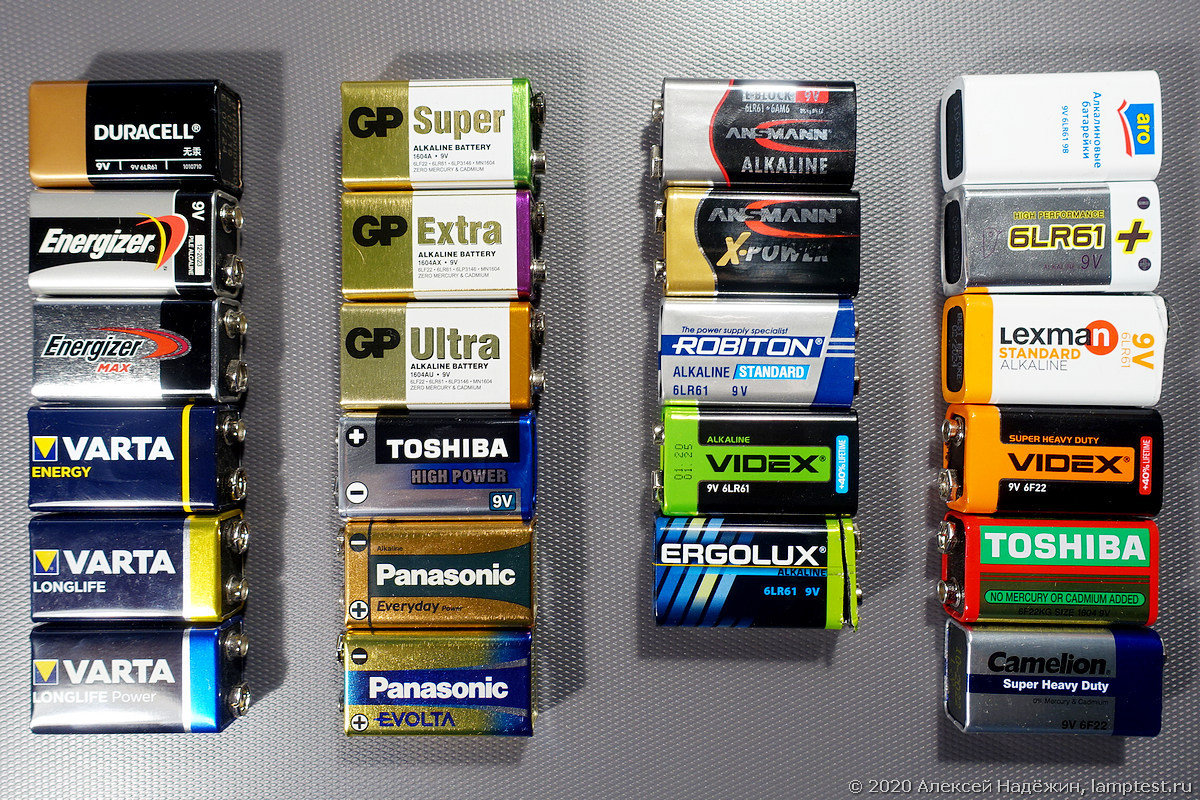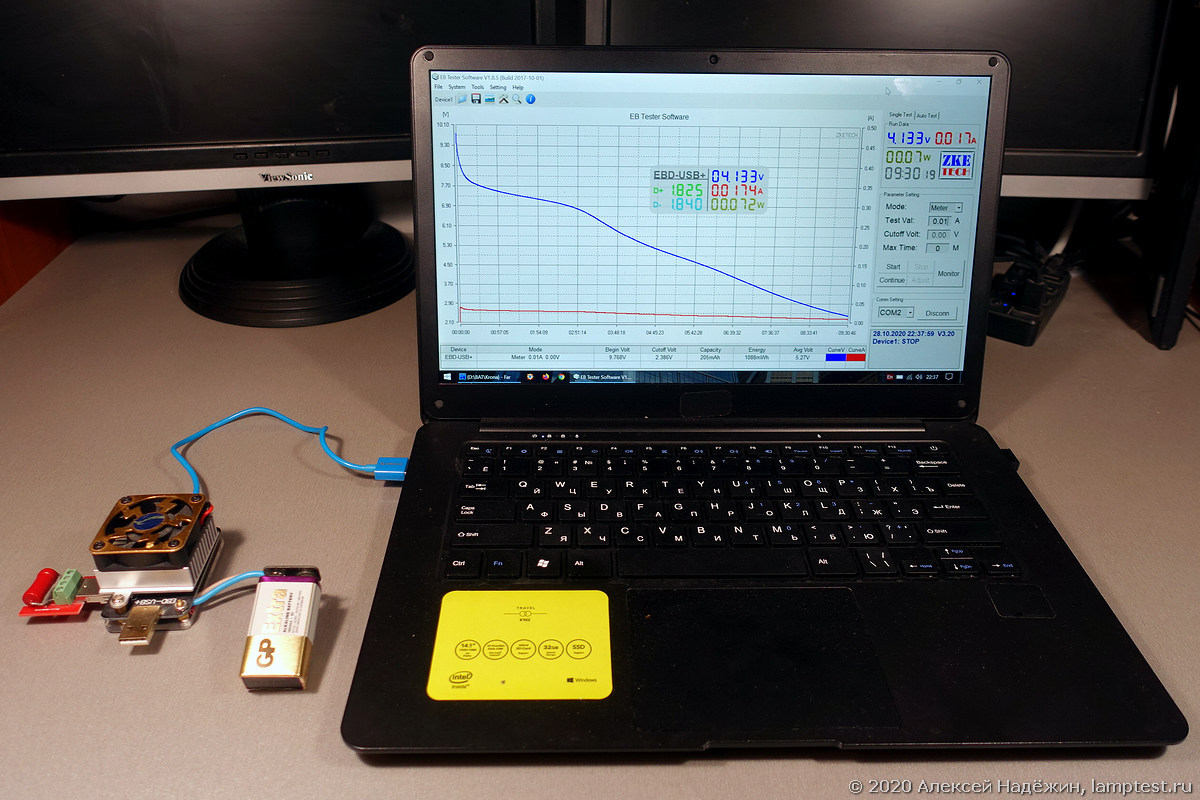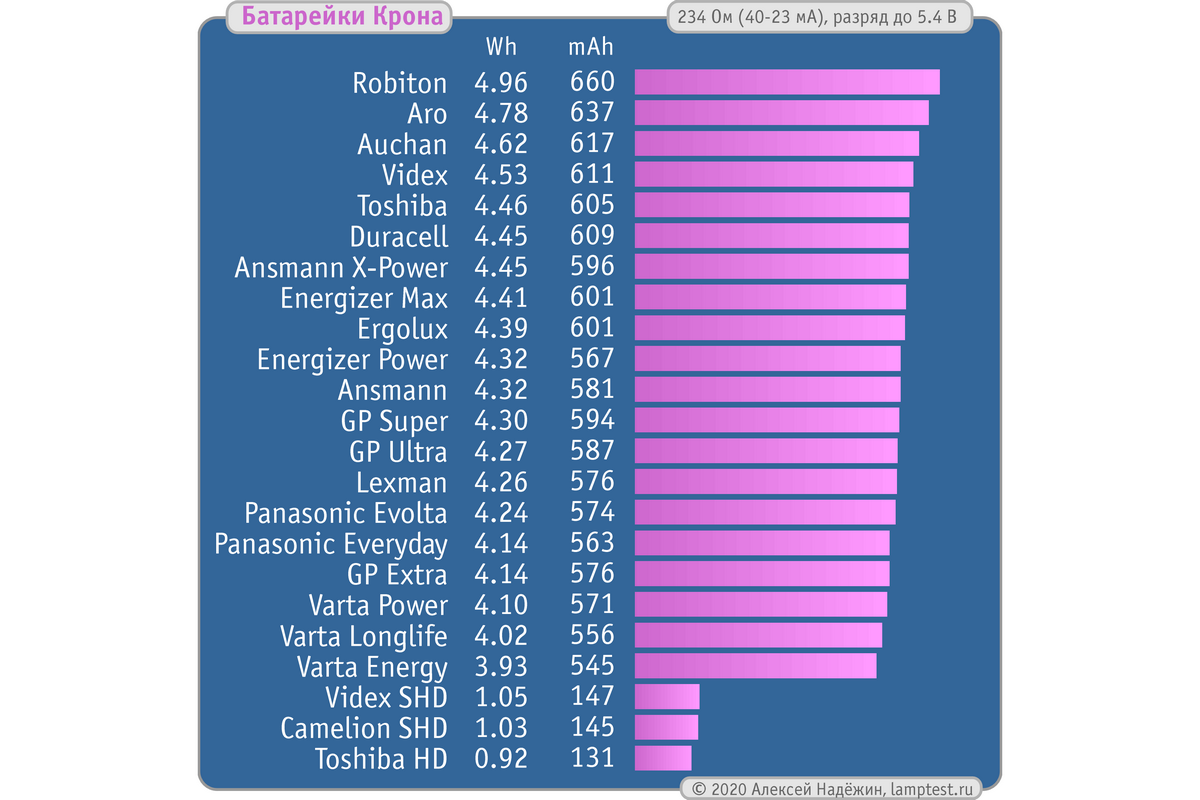Now I tried to collect the popular batteries of this type and tested 20 6LR61 alkaline batteries and 3 6F22 saline batteries.

Kron's batteries have a nominal voltage of 9 volts, therefore, the high-precision multichannel devices Yarostanmash and Oleg Artamonov's analyzer cannot be used for the test (both of these devices operate with voltages no higher than 4.5 volts). I had to test the Crones using a modified EBD-USB + device in voltage recorder mode. It connects to a computer and writes the exact battery voltage values to a file every two seconds.


The device has a built-in electronic load and current measurement function, but the current is measured with an accuracy of 1 mA, which is not enough in this case. It is better to use a constant resistor as a load for "Kron" so that the discharge current decreases as the voltage supplied by the battery drops. I used a 234.0 ohm resistor (measured with an accurate multimeter).

Such a load gives a current of about 40 mA at the beginning of the discharge and the alkaline battery is discharged for 9-11 hours.
It is this current that is consumed by radio microphones using Crones, so this discharge mode was selected for the test.
Manufacturers indicate a shelf life of 3 years for Krona salt batteries, and 5 to 7 years for alkaline batteries. All batteries were purchased or received from distributors immediately before the test, but their "age" ranged from 2 months to 2.5 years. The estimated date of manufacture is in parentheses for those batteries that only show the expiration date. The table also shows the weight of the batteries, their initial voltage and barcode.

This is how the batteries were discharged.

Results when discharged to 5.4 V (each cell is discharged to 0.9 V).

The Robiton battery was able to give the most energy, but the difference with Varta Energy, which gave the least energy from alkaline batteries, was just over 20%.
In this discharge mode, most batteries differ in capacity by no more than 10% and I fully admit that with such a slight difference, batteries from other batches could have been arranged differently in the table.
Saline batteries in this discharge mode provide much less energy than alkaline ones. Although many people use salt Crones in the same radio microphones, such a discharge mode is too heavy for them. As my spring experiment showed, when discharged with small currents, salt batteries will give 20-30% more energy, but still it is much less than alkaline batteries.
It is surprising that the cheapest alkaline battery Robiton (90 rubles) became the winner of the test, and cheap batteries also appeared on the first lines of the final table - aro from the Metro store (139 rubles), Auchan from Auchan (120 rubles), Ergolux (90 rubles), Videx (100 rubles), Lexman from Leroy Merlin (112 rubles). At the same time, the very expensive batteries Duracell, Energizer, Varta, Panasonic turned out to be far from the best.
In general, we can assume that the batteries of all brands and models are almost the same in capacity, and you can safely buy the cheapest ones.
The main difference is only in the type of chemistry - alkaline ones give 4-6 times more energy than salt ones, but if a battery is bought for a device that consumes little, it is quite possible to do with salt batteries.
I would like to express my gratitude to the companies that provided some of the batteries for the test:
Source Batteris (Duracell, Varta, Panasonic, Ansmann, Robiton);
A-Zet (GP);
Unity Eurasia (Toshiba);
Yellow-wholesale (Videx).
© 2020, Alexey Nadezhin